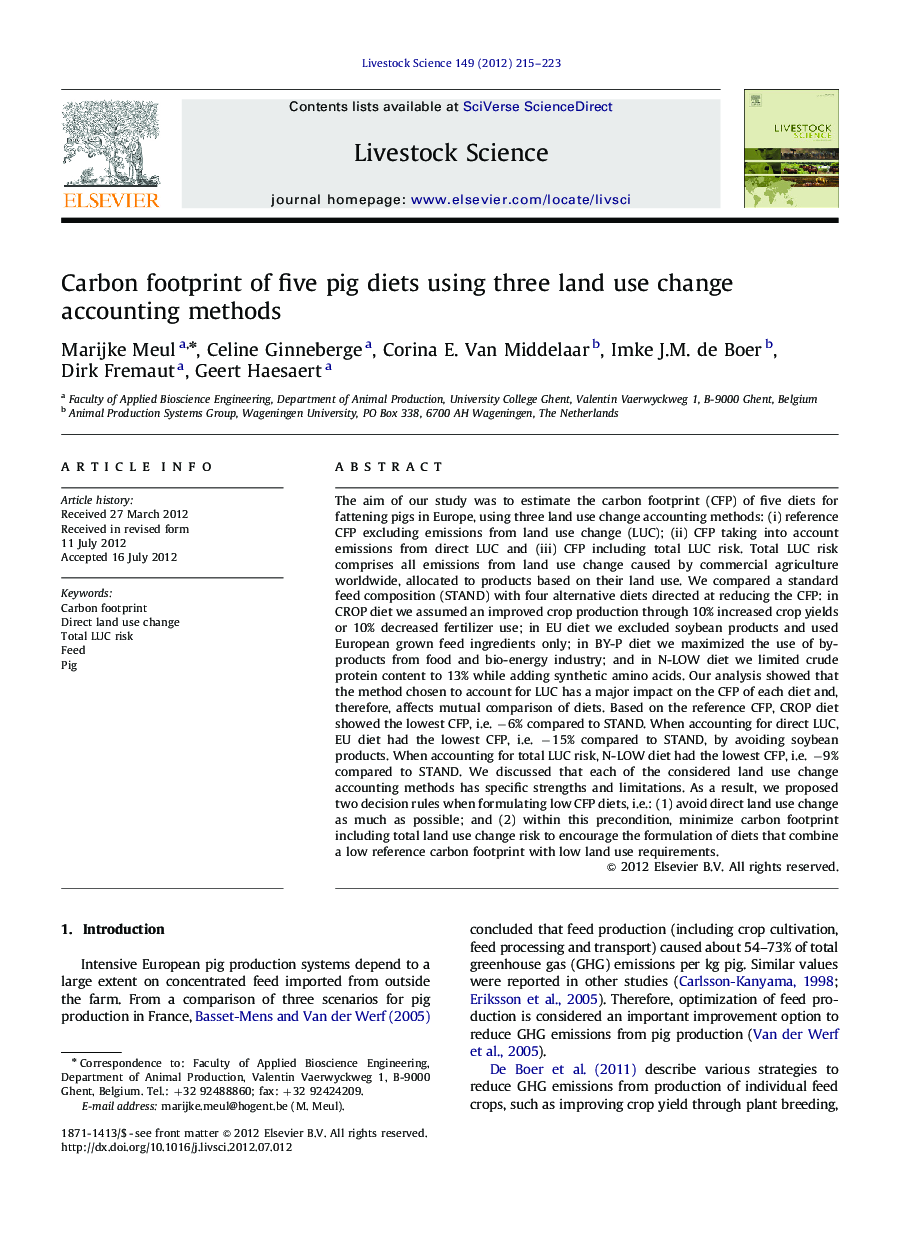| کد مقاله | کد نشریه | سال انتشار | مقاله انگلیسی | نسخه تمام متن |
|---|---|---|---|---|
| 2447418 | 1109503 | 2012 | 9 صفحه PDF | دانلود رایگان |

The aim of our study was to estimate the carbon footprint (CFP) of five diets for fattening pigs in Europe, using three land use change accounting methods: (i) reference CFP excluding emissions from land use change (LUC); (ii) CFP taking into account emissions from direct LUC and (iii) CFP including total LUC risk. Total LUC risk comprises all emissions from land use change caused by commercial agriculture worldwide, allocated to products based on their land use. We compared a standard feed composition (STAND) with four alternative diets directed at reducing the CFP: in CROP diet we assumed an improved crop production through 10% increased crop yields or 10% decreased fertilizer use; in EU diet we excluded soybean products and used European grown feed ingredients only; in BY-P diet we maximized the use of by-products from food and bio-energy industry; and in N-LOW diet we limited crude protein content to 13% while adding synthetic amino acids. Our analysis showed that the method chosen to account for LUC has a major impact on the CFP of each diet and, therefore, affects mutual comparison of diets. Based on the reference CFP, CROP diet showed the lowest CFP, i.e. −6% compared to STAND. When accounting for direct LUC, EU diet had the lowest CFP, i.e. −15% compared to STAND, by avoiding soybean products. When accounting for total LUC risk, N-LOW diet had the lowest CFP, i.e. −9% compared to STAND. We discussed that each of the considered land use change accounting methods has specific strengths and limitations. As a result, we proposed two decision rules when formulating low CFP diets, i.e.: (1) avoid direct land use change as much as possible; and (2) within this precondition, minimize carbon footprint including total land use change risk to encourage the formulation of diets that combine a low reference carbon footprint with low land use requirements.
Journal: Livestock Science - Volume 149, Issue 3, November 2012, Pages 215–223